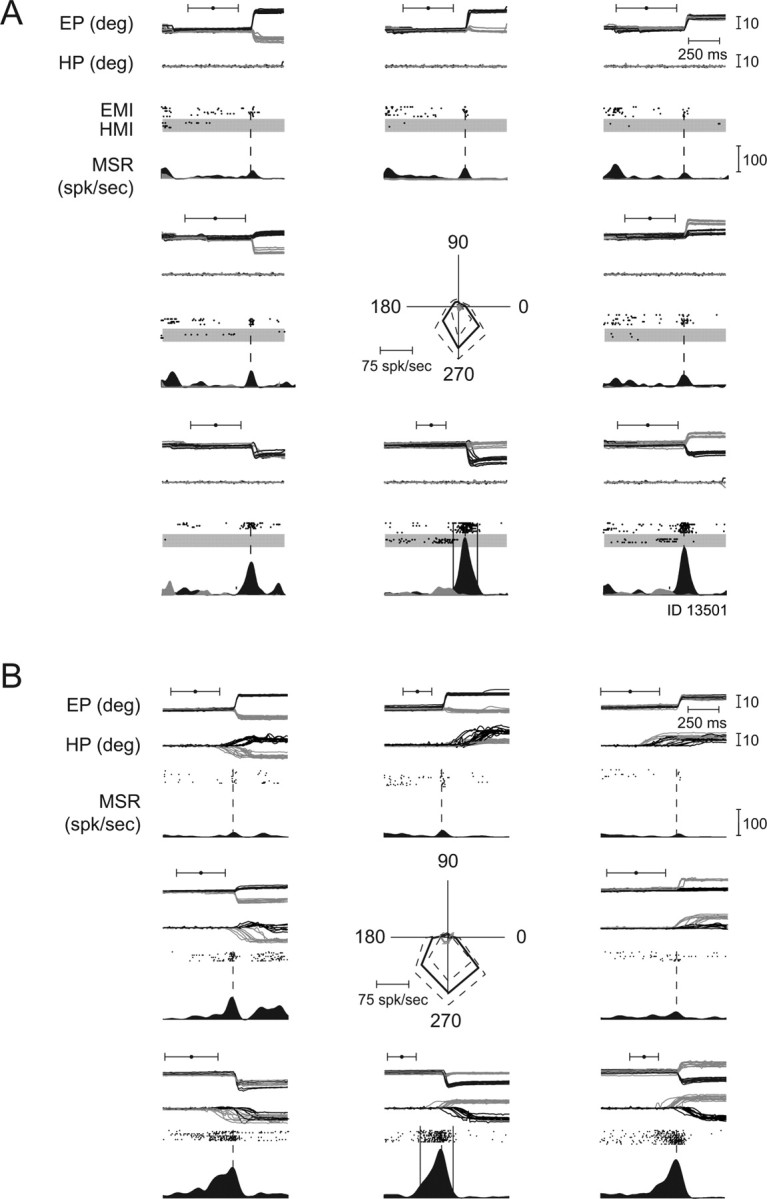Figure 6.

Exemplary eye movement-related neuron, preferring saccades. A, Saccades in eight directions in the frontoparallel plane; for each direction the x- (gray lines) and y- (black lines) positions of the eyes (EP, eye position) and the projections of the 3D hand trajectories onto the screen plane (HP, hand position) are shown. All traces are aligned on movement onset. The black dots with whiskers indicate the mean time ± SD of the go signal. Response during isolated saccades (EMI, eye movements isolated) and hand movements (HMI, hand movements isolated) in eight directions in the frontoparallel plane. The neuronal discharge (MSR, mean spike rate) is represented by raster dots (saccades: black dots on white background, hand movements: black dots on gray background) and PETHs (saccades: black, hand movements: gray). Note: burst of activity during saccade trials, absence of discharge modulation during hand movement trials. Movement onset is indicated by a broken vertical line; onset and end of the bursts for the preferred direction of movement (here downward) are indicated by solid vertical lines. The polar plot in the center of the figure depicts the directional tuning curve of this neuron (rightward corresponds to 0°). The solid lines give the mean firing rates during saccades (black) and hand movements (gray) as function of direction for the time interval defined by burst onset and offset in the preferred direction. The broken black and gray lines give ±SD of the discharge rate. B, Responses of the same unit to yoked eye and hand movements, tested pseudorandomly interleaved with the movements shown in A. For each direction the x- (gray lines) and y- (black lines) positions of the eyes (EP) and the projections of the 3D hand trajectories onto the screen plane (HP) are shown. All traces are aligned on eye movement onset. The black dots with whiskers indicate the mean time ± SD of the go signal. deg, Degree; spk/sec, spikes per second.
